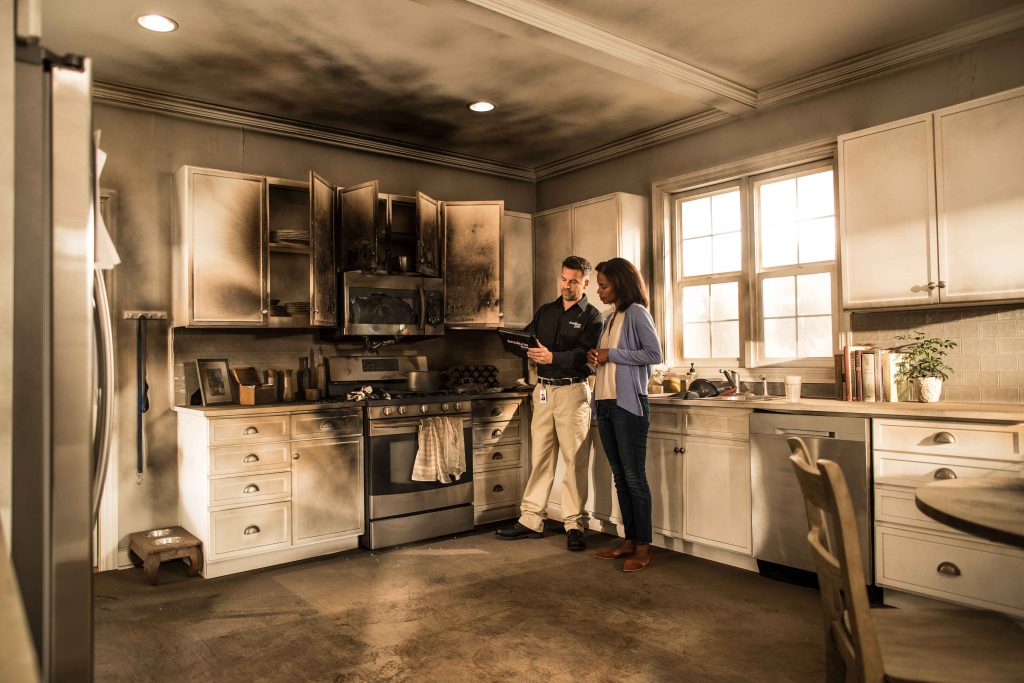
Fire is one of the most destructive forces a home can face—but recovery doesn’t have to be slow or uncertain. Thanks to advancements in materials, equipment, and digital diagnostics, fire damage restoration is entering a new era—one where speed, accuracy, and safety work in tandem.
While traditional restoration methods relied heavily on visual inspection, manual labor, and trial-and-error cleaning, today’s tools are smarter and more responsive. From thermal imaging to fire-resistant materials and remote monitoring, innovation is giving restoration teams a sharper edge—and homeowners better results.
Here’s a look at the future of fire restoration and how new technologies are reshaping the way homes are brought back to life.
Smarter Assessment: Seeing What the Eyes Can’t
Modern fire damage often leaves more behind than what’s visible—trapped smoke, hidden soot, and subtle structural shifts that could cause future issues. That’s where advanced diagnostics step in.
Thermal Imaging
Infrared cameras are now standard in professional assessments. These tools detect temperature variations in walls, ceilings, and floors, revealing:
- Smoldering hot spots that could reignite
- Heat-damaged materials beneath the surface
- Moisture left behind from firefighting efforts
This non-invasive method provides a fast, detailed understanding of where attention is truly needed.
Air Quality Sensors
Instead of relying on odor alone, today’s teams can measure the exact levels of airborne contaminants using digital sensors. These devices detect volatile organic compounds (VOCs), soot particles, and other harmful residues that linger after a fire.
Companies like Secure Restoration use this data to determine when a space is safe to re-enter—and when further air filtration is needed.
Faster Cleanup: Equipment Designed for Precision
Removing smoke odor and soot no longer relies on harsh chemicals and heavy scrubbing alone. Modern tools now target the root of the issue more directly.
Hydroxyl Generators
Unlike ozone machines, hydroxyl generators break down odors and bacteria without requiring people or pets to leave the home. They use UV light and water vapor to neutralize smoke particles at the molecular level, offering a safer and more efficient deodorizing process.
HEPA Air Scrubbers
These devices clean the air while work is in progress, trapping soot and microscopic particles in real-time. This means cleaner air, faster results, and fewer risks for restoration teams and homeowners alike.
Dry Ice Blasting
An advanced alternative to sanding or chemical cleaners, dry ice blasting removes soot from hard surfaces without adding moisture. It’s especially effective on brick, stone, and wood, preserving the integrity of older or delicate structures.
New Materials: Built-In Resistance to Heat and Smoke
As more homes are rebuilt after fire, the industry is seeing a shift toward smarter materials designed to withstand future threats.
Fire-Retardant Insulation
Instead of fiberglass, many restoration projects now include mineral wool or ceramic fiber insulation, which can withstand temperatures above 1,000°F and provide additional soundproofing and energy efficiency.
Intumescent Paint
This specialty coating expands when exposed to heat, forming a protective barrier that delays the spread of flames and helps maintain structural stability during a fire event.
Non-Combustible Finishes
Modern design meets safety with options like cement board siding, metal framing, and ceramic flooring—all of which reduce fire load and resist smoke absorption.
Homeowners working with providers like Secure Restoration are often introduced to these materials during the rebuild phase, choosing upgrades that improve long-term peace of mind.
Robotics and Remote Access
Some restoration tasks are dangerous or hard to reach—like attic inspections, duct cleaning, or evaluating large commercial spaces. New technology is stepping in to help.
Inspection Drones
Equipped with thermal cameras, drones can safely inspect rooftops, high ceilings, and inaccessible areas without putting anyone at risk. This speeds up assessments and ensures more accurate reporting.
Miniature Robots
Small, wheeled robots with cameras and environmental sensors can now be deployed in tight crawlspaces or ductwork to check for lingering soot, heat damage, or compromised materials.
These tools are especially helpful after large-scale fires, where safety and access are top concerns.
The Role of AI and Digital Documentation
Artificial intelligence is starting to assist with everything from estimating restoration costs to predicting damage patterns.
AI-Powered Claims Processing
Software now uses photos and sensor data to automatically identify burned materials, categorize loss types, and recommend next steps. This reduces delays between insurance approval and restoration work.
Cloud-Based Project Management
Many modern fire damage restoration services Asheville offer clients online portals where they can:
- View progress updates
- Approve quotes
- Track timelines and before/after images
- Communicate with project managers in real time
This transparency makes a stressful situation more manageable and gives homeowners peace of mind during the rebuild.
Restoring More Than Property
Technology in fire damage restoration is ultimately about restoring more than just a house—it’s about giving homeowners their comfort, safety, and routines back faster.
With fewer health risks, less disruption, and better long-term protection, innovations in the field are redefining what recovery looks like. Instead of months of uncertainty, many families now see results in weeks. Instead of lingering smoke odors, they return to clean air and sealed surfaces. Instead of vulnerable structures, they move back into homes built for resilience.
And as tools and techniques continue to evolve, companies like Secure Restoration are staying at the forefront—adopting the best practices not just for efficiency, but for the people they serve.
Final Thought: The Future Is Here—and It’s Working
Fire damage restoration has come a long way from scrubbing and repainting. Today, it’s an advanced, technology-assisted process that uses science, data, and innovation to speed recovery and reduce stress.
As tools get smarter, materials get stronger, and teams get more equipped, homeowners benefit not just from faster fixes—but from better outcomes.
The next time fire threatens a home, the path back won’t just be possible—it’ll be precise.
